There are a lot of guides on lead generation out there, written by experts from a number of reputable marketing blogs. Unfortunately, most of them speak to businesses who largely operate online, meaning they’re generating leads from all over the world.
But if your business deals primarily with local customers, like a contractor, real estate agent or dentist, you’ll want to look at specializing your lead generation efforts to maximize their effect in generating you high-quality, local leads.
In this guide, I’ll give you the local lead generation tools of the trade, as well as an overview of traffic sources you can use to push visitors to your lead gen pages with the goal of maximizing local lead generation.
Let’s dive in!
Check out our complete guide to local marketing for more local marketing strategies.
Local Lead Generation Tools
When it comes down to the actual action of generating a local lead, the practice is pretty much the same as generating any other lead. You’ll still need some sort of lead-generating tool, which I’ll cover below, and a lead magnet: some sort of offer or incentive that gets people to give you their lead information.
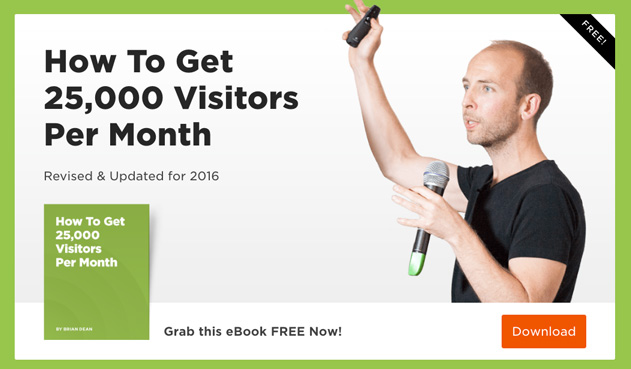
Being familiar with all of the local lead generation tools that are available to you is one of the best ways to maximize your success with local lead generation. I’ll introduce a few of these tools in this section, along with a couple awesome examples.
Popups
Go to pretty much any E-commerce or business website and you’re almost guaranteed to see at least one popup (ad blockers allowing).
Why?
They work.
Popups aren’t the spammy, obtrusive nightmares they were in the 90s and 2000s. Nowadays, businesses use them all the time to alert potential customers to new offers, build their blog subscriber lists, and of course, generate leads.

I find popups are great for local lead generations due to their versatility. Popups can be used in a multitude of ways, triggered by a wide variety of user actions. Types of popups include:
- Entry: The “traditional” popup, entry popups appear as soon as a viewer lands on a page.
- Exit: Similarly, this type of popup triggers when a visitor’s mouse leaves the window.
- Click: Click popups open when a user clicks a certain link (or button, or image, etc.)
- Timed: Timed popups appear after a visitor has been on the page for a predetermined amount of time.
- Scroll: These popups appear when the visitor has scrolled down a certain percentage of the page they’re on.

The type of popup you choose will depend entirely on your goals and how your website is structured. For local lead generation, I’d generally recommend either an entry popup on your highest traffic page (probably your homepage) or an exit popup.
Entry popups are great for local lead generation because they maximize the number of people who will see your offer (which can increase overall conversion depending on the offer), and exit popups are awesome because they help you capture traffic you might otherwise not get any benefit from.
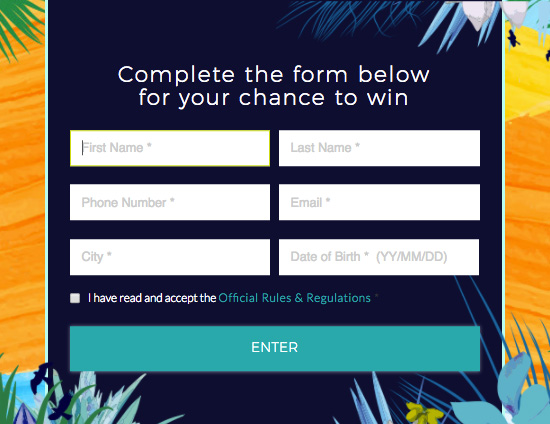
When designing your popup, keep in mind that you can’t treat it like a landing page or any other page – it’s smaller, meaning you need to keep your copy concise and focus on communicating the benefit of your offer quickly. If you’re in dire need of exposition, use your popup to link to another page.
Landing Pages
Landing pages are ubiquitous in the world of lead generation, and for good reason. They’re effective lead generation tools that allow you to communicate a lot of information in a medium that can be easily optimize to help you generate as many local leads as possible.
Though popups or simple forms are often more effective when it comes to generating leads on your website, landing pages are unmatched in their effectiveness when it comes to generating leads from ads on Google or Facebook (more on ads later).
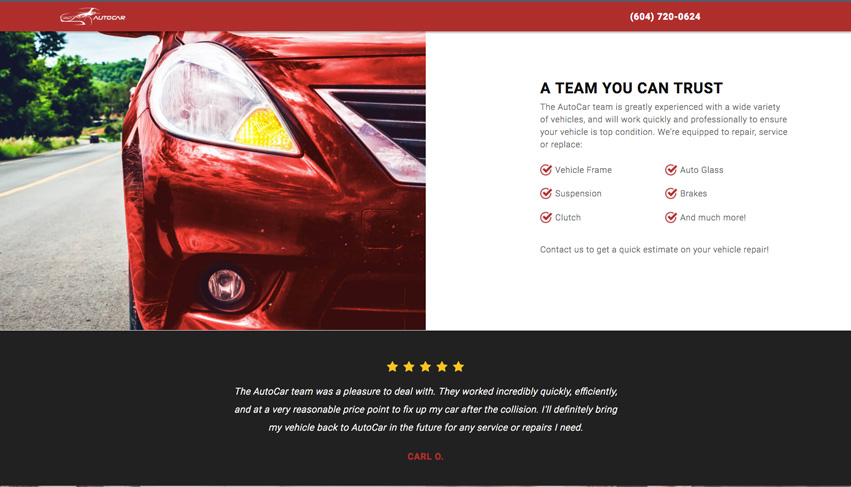
Here’s a few landing page best practices:
- Keep it simple: Even though you have a lot more freedom compared to popups when it comes to landing page design, you don’t want to overdo it by making a page that’s too long. Stick to talking about the important stuff.
- Keep your form fields short: Even though you’re looking to generate quality leads, you want to keep the number of form fields to as few as possible – if you don’t need anything more than a name and email, don’t ask for it.
- Clearly highlight your benefit or lead magnet: Whether you’re giving them a free consultation or a discount on a future purchase, you want to clearly highlight in your headline what visitors get by converting on your landing page.

Forms
Forms are somewhat a part of the two aforementioned lead gen tools, but they’re important enough to warrant a section of their own.
They’re great because they can be simply embedded into your blog or website to help you generate local leads. Embedding a form means you’re able to generate a lead without leading your visitor to another page or introducing a popup, both of which can take them away from the content they were trying to look at in the first place.

One thing to note is that the medium your local lead generation takes should match the size of your ask, as well as the size of your offer. If you’re asking for a lot of information (or significant information like their phone number), you’re better off using a popup – or even better, a landing page.
But, if you just want an email address, a simple embedded form can be the best way to get that information from potential leads. Presenting a smaller lead gen form can also minimize the ask, making it seem like a smaller commitment compared to a landing page.
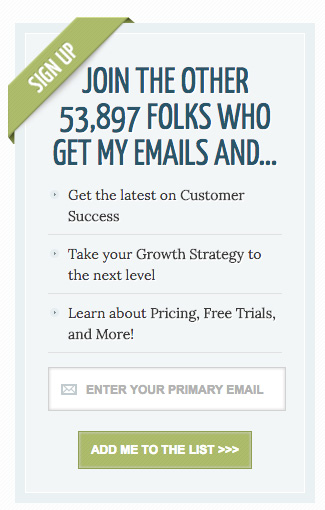
Contests
The final (and often most effective) lead generation tool is a contest. Whether it’s a sweepstakes, a photo contest, or a referral contest, these nifty little campaigns can help you generate a massive number of leads in a short timeframe.
We’ve written tons of articles on how to run a contest on the Wishpond blog, so I’ll skip over that, but we can talk about a few best practices here:

- Give away an exciting (but relevant) prize: Choosing a prize that’s relevant to your business but is likely to excite potential entrants can maximize the impact of your contest. A relevant prize makes sure entrants are interested in your business (giving away an iPad, for example, will get you a ton of low-quality leads) and an exciting prize makes sure conversion rates are high.

- Follow up with contest entrants who didn’t win: Though a contest is great for increasing engagement and awareness within your local community, it’s incredibly effective as an initial step in your lead nurturing process. Create a special email drip campaign for contest entrants to help nurture them into leads.
- Incentivize sharing: Adding a social sharing action to your contest (increasing # of entries in exchange for social shares) can help your contest grow exponentially. This is particularly true for local lead generation, as people who enter your contest are likely to share it with their local friends and family.
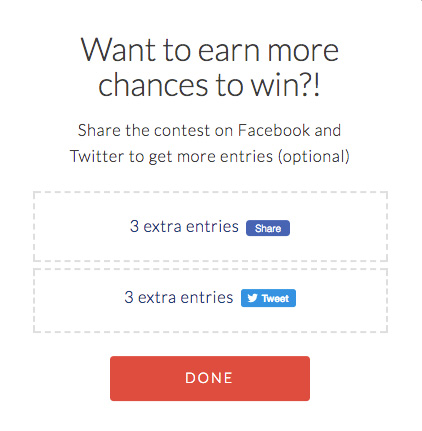
Local Lead Generation: Traffic Sources
Everything prior to this point only makes up half of the local lead generation puzzle. If you really want to succeed in your efforts to generate local leads, you’re going to want to drive as much traffic as you can to the lead generation pages you’ve created. Unfortunately, traffic doesn’t come easy (or, in most cases, cheap).
Let’s explore a couple ways you can start driving potential leads to your lead generation stations.
Google Ads
I won’t beat around the bush in this guide: if you’re looking for big returns, you’re going to have to pay to play. One of the best ways to drive massive traffic is to invest in Google Ads. Google Ads (along with SEO) are great traffic sources because they’re based on search interest, meaning you’re likely to have more engaged leads coming from Google Ads than most other traffic sources.
For ads, you’ll want to create a landing page – one that’s specific to the ad itself (if you’ve got the time, I’d create slightly different landing pages for each ad). Make sure when you’re setting up your ads that you’re targeting keywords directly related to your landing page and product.
Facebook Ads
The other option when it comes to ads is Facebook Ads, which are, admittedly, lower-intent than Google Ads but can reach a massive number of viewers based on interest. An underappreciated feature of Facebook Ads is that they’re pretty much unblockable because they’re part of the Facebook platform.
If you’re running a contest to generate leads, I’d pick Facebook Ads over Google Ads. They allow you to provide a little more context to your offer and are also more easily shareable, which definitely helps in generating more leads.
Social Media
In most cases, social media isn’t the best way to drive traffic – but it is free, and it’s a medium you should be employing for lead gen in most cases. Of course, this becomes more and more important based on the size of your social media following and how engaged they are. If you’ve got a loyal Facebook fanbase, posting your lead gen offer (a contest almost always works best on social) to your page can help you pull in a bunch of extra leads.
Another way to boost social success with respect to local lead generation is to add share buttons to your lead gen page (a landing page or contest), making it easy for visitors to share the offer with their friends.
Community Outreach
If you’re focusing on local lead generation, you have the awesome advantage of being able to take some of your marketing offline.
Look for community events and other opportunities that will allow your business to connect with potential leads and customers.
Attending with an iPad or laptop in tow, along with a special offer like a contest can help to get booth or table visitors excited, helping you create genuine connections with the community around you and generate leads. I have no real data to back this up, but I can definitely see conversion rates for community outreach lead generation efforts vastly outperforming online-only efforts – allowing people to interact directly with the people behind a business can do wonder for their trust and your credibility.
In-store Materials
Similarly, creating a special in-store offer to capture retail traffic can provide a significant boost to your lead generation efforts. Giving store visitors (for example) 10% off their first purchase in exchange for their email can actually greatly increase revenue in the long run because you’re able to market to them in the future with email, increasing their chance of a future purchase.
Local Lead Generation: Tying It Together
By now, you should be armed with a pretty good idea of how to create a solid local lead generation strategy.
You’re going to need to use lead generation tools to create a campaign: a landing page, popup, form, or contest (or a few of these put together). Then, you’ll drive traffic to your campaign using avenues including ads, social media, and more grassroots methods like community outreach and in-store marketing.
We also recommend this article about how you should first consider your monetization method before thinking to generate leads out of it.
Hopefully, you’re feeling much more confident about local lead generation. Now go forth and generate those local leads!

